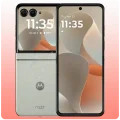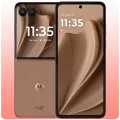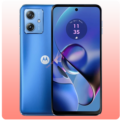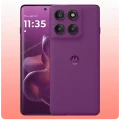- Home
- All Products
- Mobiles
- Motorola Edge 60
Motorola Edge 60
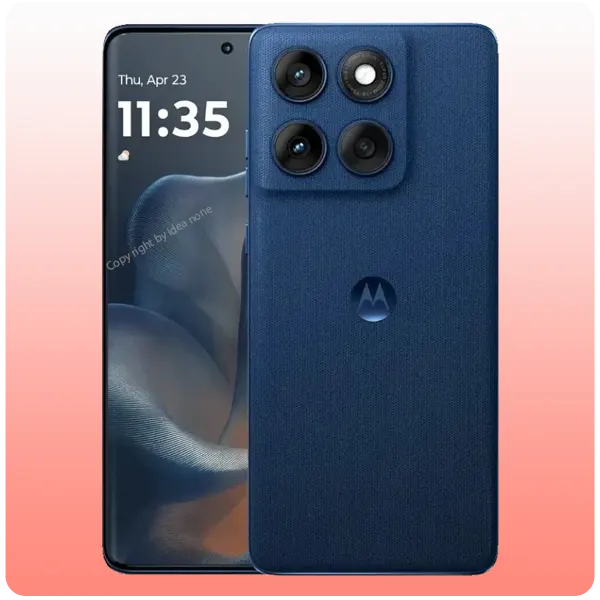

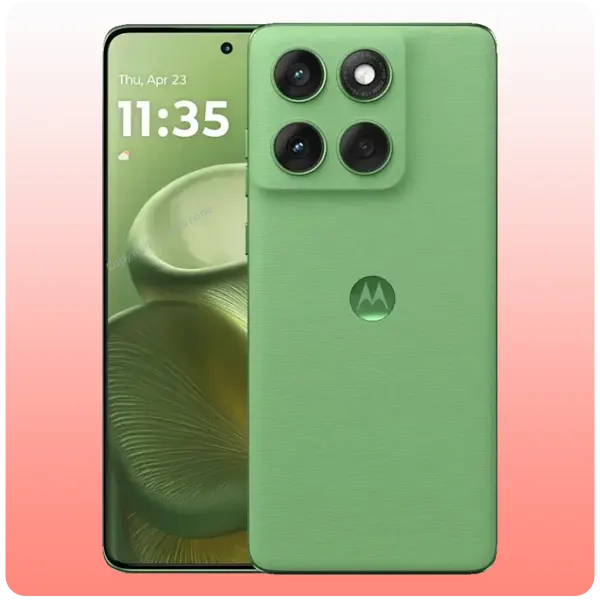

-
CPU: Mediatek Dimensity 7300 (4 nm)
-
RAM: P-OLED, 1B colors, 120Hz
-
Storage: 256GB, 512GB
-
Display: 6.67 inches, P-OLED, 1B colors, 120Hz
-
Main Camera: 50 MP + 10 MP + 50 MP
-
Selfie Camera: 50 MP
-
Battery: 5200 mAh (Global)
-
OS: Android 15
Overview
General
| Device Type | Smart Phone |
| Announced | 24-04-2025 |
| Released | 25-04-2025 |
| Status | Available |
| International Price | $353 |
| Indian Price | ₹22,999 |
| BD Unofficial Price | ৳38,000 |
Design
| Type Design Type called form factor refers to a mobile phone's size, shape, and style as well as the layout and position of major components of phone. There are three major form factors seen in mobile phones => bar phones, folding phones and sliding phones. | Bar |
| Dimensions | 161.2 x 73.1 x 7.9 mm or 8.2 mm |
| Weight | 179 g or 181 g (6.31 oz) |
| Body Thickness | 7.9mm |
| Protection | Glass front (Corning Gorilla Glass 7i) |
| Colors | Pantone (Gibraltar Sea, Shamrock, Plum Perfect) |
| Water Resistant | IP68/IP69 dust tight and water resistant (high-pressure water jets; immersible up to 1.5m for 30 min) |
Network
| Technology | GSM / HSPA / LTE / 5G |
| SIM | Nano-SIM Nano-SIM + eSIM Nano-SIM + Nano-SIM |
| Speed | HSPA, LTE, 5G |
Display
| Display Type Display Technology => A number of display technologies and types used in mobile phones => TFT (Thin Film Transistor), IPS (In-Place Switching), OLED (Organic Light Emitting Diode), AMOLED (Active-Matrix Organic Light-Emitting Diode), Super AMOLED (an even advanced version of AMOLED), Resistive Touchscreen (Resistive touchscreens contain two layer of conductive material with a very small gap between them which acts as a resistance), Capacitive Touchsceen (Capacitive touchscreen technology consists of a layer of glass coated with a transparent conductor) | P-OLED, 1B colors, 120Hz, HDR10+ |
| Size | 6.67 inches, 107.4 cm² (~91.1% screen-to-body ratio) |
| Resolution | 1220 x 2712 pixels, 20:9 ratio |
| Display Colors Display Colors is refers to the number of different shades of colors that the screen is capable of displaying => 64K colors, 256K colors and 16 million colors, Obviously 16M is highest available range of colors and better than others. | (~446 ppi density) |
| Pixel Density Pixel Density (PPI) is refers to the concentration of pixels on a particular display, measured in pixels per inch (ppi). Pixel density is calculated by dividing the diagonal pixel resolution of a display by its diagonal size, higher pixel density better display quality. | (~446 ppi density) |
| Refresh Rate | 120Hz |
| Display Brightness | 4500 nits |
Main Camera
| Camera 1 Camera is able to capture photographs and usually videos, The most important characteristics of a camera are the resolution (measured in megapixels), lens focus type (fixed or automatic), higher megapixel cameras are known to capture higher quality photos, but not always a good measurement of the photos quality. | 50 MP, f/1.8, 24mm (wide), 1/1.56", 1.0µm, multi-directional PDAF, OIS |
| Camera 2 | 10 MP, f/2.0, 73mm (telephoto), 1/3.94", 1.0µm, PDAF, 3x optical zoom, OIS |
| Camera 3 | 50 MP, f/2.0, 12mm, 122˚ (ultrawide), 0.64µm, PDAF |
| Video | 4K@30fps, 1080p@30/60/120/240fps, gyro-EIS |
| Camera Features | LED flash, HDR, panorama |
Selfie Camera
| Camera 1 Camera is able to capture photographs and usually videos, The most important characteristics of a camera are the resolution (measured in megapixels), lens focus type (fixed or automatic), higher megapixel cameras are known to capture higher quality photos, but not always a good measurement of the photos quality. | 50 MP, f/2.0, (wide), 0.64µm |
| Video | 4K@30fps, 1080p@30/120fps |
| Camera Features | HDR |
Software
| Operating System OS => Every computer system run on a base software called Operating System (OS). Operating System controls all basic operations of the computer (such as smartphone, PDAs, tablet computers and other handheld devices). The Operating System allows the user to install and run third party applications (apps), apps are used to add new functionality to the device. | Android 15 |
Hardware
| Chipset Chipset is a group of integrated circuits designed to perform one or a more dedicated functions, often with real time computing constraints, Popular smartphones are equipped with more advanced embedded chipsets that can do many different tasks depending on their programming. | Mediatek Dimensity 7300 (4 nm) |
| CPU CPU (Central Processing Unit) mostly known as processors, CPU processes instructions in order to carry out certain functions that make your device operate properly. Processors are often described as the brain of computers, smartphones and tablets, Smartphones and tablets rely on processors to carry out their every task, Processors are an incredibly important factor in selecting any type of computing device, including your smartphone. |
Octa-core (4x2.5 GHz Cortex-A78 & 4x2.0 GHz Cortex-A55) |
| GPU GPU (Graphics Processing Unit) is a single-chip processor designed to rapidly manipulate and alter memory to accelerate the creation of images in a frame buffer intended for output to a display, This includes things such as lighting effects, object transformations, and 3D motion. | Mali-G615 MC2 |
| RAM (Memory) RAM (Random Access Memory) is a type of computer memory that can be accessed randomly, any byte of memory can be accessed without touching the preceding bytes that allows information to be stored and accessed quickly from random locations. RAM is the most common type of memory found in computer systems, smartphones, tablets and other electronic devices. | 8GB, 12GB |
| Internal Storage Internal Storage is a data storage space (flash memory) mostly used in smartphones, tablets and other electronic devices where operating system, apps, music, photos, videos, files and other user data Is stored. | 256GB , 512GB |
| Storage Technology | UFS 4.0 |
| Card Slot Memory Card Slot is a special slot for inserting a memory card. Memory cards allow you to expand the phone's built-in memory, A memory card (sometimes called a flash memory card or a storage card) is a small storage medium used to store data such as text, pictures, audio, and video, for use on small, portable or remote computing devices such as mobile phones, mp3 players, digital cameras. | microSDXC |
| Sensors Sensors are electronic components that detects and responds to some type of input from the physical environment. The specific input could be light, heat, motion, moisture, pressure and location, The output is generally a signal that is converted to use in computing systems, a location sensor, such as a GPS receiver is able to detect current location of your electronic device. |
Fingerprint (under display, optical), accelerometer, gyro, proximity, compass |
Connectivity
| Bluetooth Bluetooth is a wireless communications technology for exchanging data between mobile phones, headsets, computers and other network devices over short distances without wires, Bluetooth technology was primarily designed to support simple wireless networking of personal consumer devices. | Yes |
| Wi-fi Wi-Fi is a popular wireless networking technology using radio waves to provide high-speed network connections that allows devices to communicate without cords or cables, Wi-Fi is increasingly becoming the preferred mode of internet connectivity all over the world. | Wi-Fi 802.11 a/b/g/n/ac/6, dual-band |
| USB | USB Type-C 2.0, OTG |
| Placement GPS The Global Positioning System is a satellite-based radio navigation system, GPS permits users to determine their position, velocity and the time 24 hours a day, in all weather, anywhere in the world, In order to locate your position, your device or GPS receiver must have a clear view of the sky. | GPS, GLONASS, GALILEO |
| NFC NFC (Near field communication) is a set of standards for smartphones and similar devices to establish peer-to-peer radio communications with each other by touching them together or bringing them into proximity, usually no more than a few inches. | Yes |
| Wireless Charging Wireless Charging (Inductive Charging) uses an electromagnetic field to transfer energy between two objects. This is usually done with a charging station. Energy is sent through an inductive coupling to an electrical device, which can then use that energy to charge batteries or run the device. |
Sound
| Loudspeaker | Yes, with stereo speakers (Dolby Atmos) |
| Headphone Jack |
Battery
| Battery Type Battery Type => Cell phones run on various kinds of batteries depending on the manufacturer, phone size or shape and features. There are basically four types of cell phone batteries => Lithium Polymer, Lithium Ion, Nickel Metal Hydride and Nickel Cadmium. | Not Mentioned |
| Capacity Battery Capacity is a measure (typically in Amp-hr) of the charge stored by the battery, and is determined by the mass of active material contained in the battery. The battery capacity represents the maximum amount of energy that can be extracted from the battery under certain conditions. | 5200 mAh (Global) / 5500 mAh (China) |
| Charging |
68W wired |
Performance Tests
| AnTuTu | 738,727 |
| GeekBench |
Single-Core: 1,083 Multi-Core: 3,187 |
Overall Review
🚀 Motorola Edge 60 Review – Features, Performance, Pros & Cons
The Motorola Edge 60 is the latest addition to Motorola’s Edge series, combining sleek design, top-tier display quality, and strong performance in a mid-range package. Designed for style-conscious users who also demand solid specs, this phone brings value with a near-stock Android experience and premium hardware features.
🔍 Motorola Edge 60 Specifications & Key Features
- Display:
- 6.67-inch pOLED display
- FHD+ resolution (2400 x 1080)
- 144Hz refresh rate
- HDR10+ support
- 1,600 nits peak brightness
- Processor: MediaTek Dimensity 7025 (6nm) – octa-core CPU for fluid performance
- RAM & Storage:
- 8GB LPDDR4X RAM
- 256GB UFS 2.2 storage (non-expandable)
- Camera System:
- Rear: 50MP main (OIS) + 13MP ultra-wide + macro
- Front: 50MP selfie camera with autofocus
- Battery: 5,000mAh with 68W TurboPower fast charging
- Build & Design: Slim, lightweight (approx. 172g), IP68-rated for dust and water resistance
- Operating System: Android 14 with Moto MyUX (near-stock, minimal bloatware)
- Connectivity: 5G, Wi-Fi 6E, Bluetooth 5.3, NFC, in-display fingerprint scanner
✅ Motorola Edge 60 Pros
- ✅ Stunning 144Hz pOLED Display – Smooth visuals and deep contrast
- ✅ Sleek Premium Design – Ultra-light, slim body with IP68 protection
- ✅ Clean Android Experience – Minimal bloatware with useful Moto gestures
- ✅ Strong Camera System – 50MP OIS main and autofocus selfie for great photo quality
- ✅ Blazing Fast Charging – 68W charger included in the box
- ✅ Future-Ready – 5G, Wi-Fi 6E, and solid chipset performance
⚠️ Motorola Edge 60 Cons
- ❌ No expandable storage
- ❌ No telephoto lens for optical zoom
- ❌ Average low-light camera performance
- ❌ No wireless charging support
🧠 Who Should Buy the Motorola Edge 60?
The Motorola Edge 60 is perfect for:
- Users who want a flagship-like display at a mid-range price
- Fans of clean Android UI without heavy skins
- Mobile photographers who want sharp daylight and portrait shots
- Gamers and streamers needing fast refresh rate & bright display
- Professionals who appreciate fast charging & lightweight design
📌 Final Verdict – Is the Motorola Edge 60 Worth It?
Yes — the Motorola Edge 60 is one of the best value mid-range smartphones in 2025. With a super-smooth 144Hz display, stylish build, excellent 50MP cameras, and clean software, it competes well against rivals like the Galaxy A-series and Nothing Phone. If you don’t mind the lack of storage expansion or wireless charging, this is a top-tier choice in its segment.
Disclaimer Note
Disclaimer: Prices listed are for reference only and may vary. We strive to keep information up to date but cannot guarantee accuracy. Please verify with the retailer before making a purchase.


